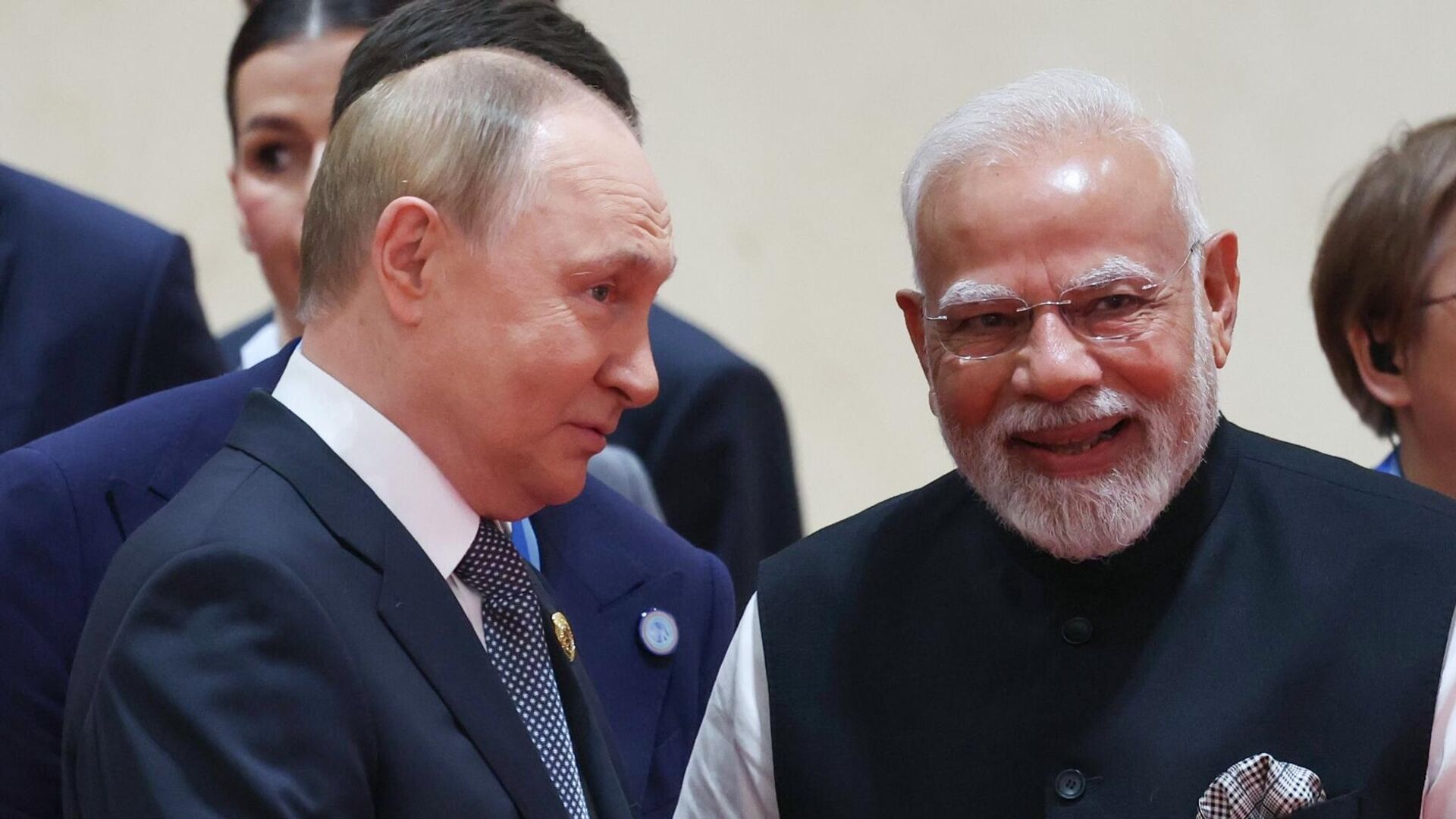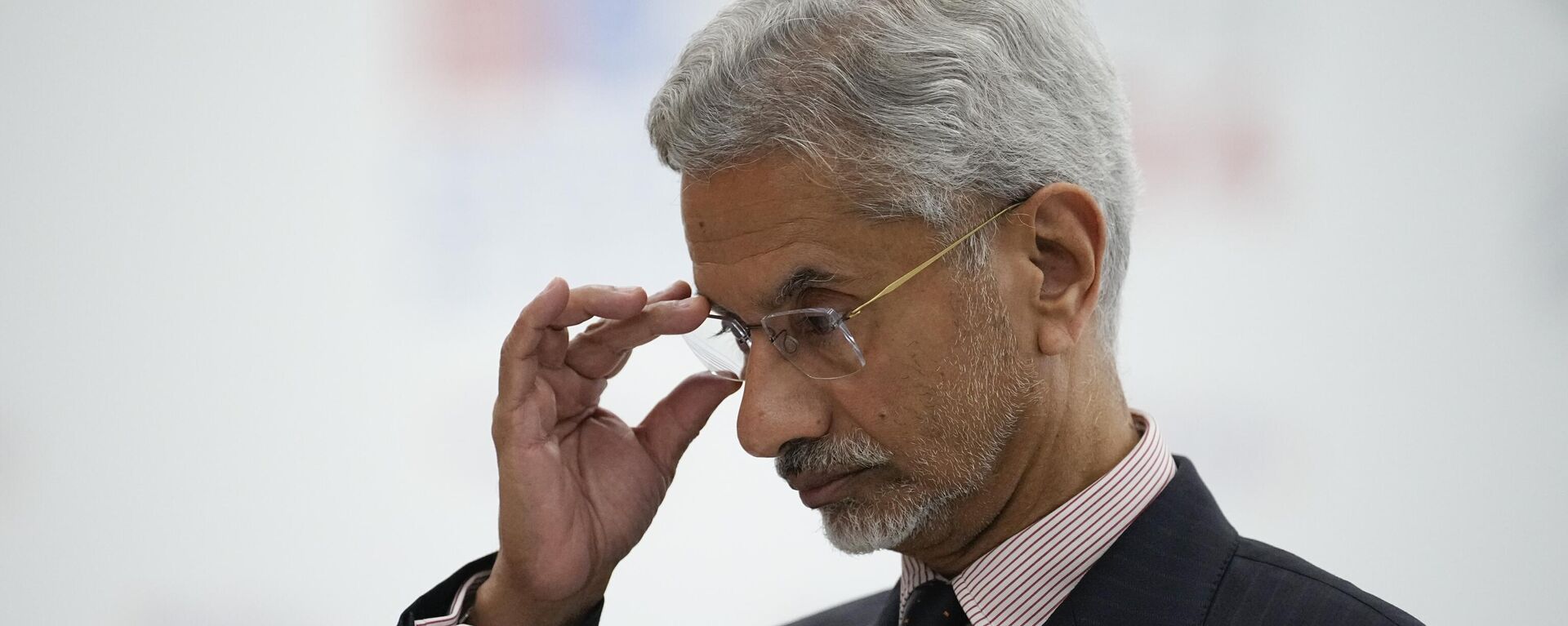Is US Pressure on India Over Russian Oil a Move to Boost Its Own Exports?

© POOL
/ Subscribe
For months, top US officials have criticised India for its energy trade with Russia.
US Energy Secretary Chris Wright's admission that Washington wants India to buy American crude instead of Russian oil confirms that US tariffs on India are merely a smokescreen, as they are not related to Russia, but rather part of a plan to increase its own oil exports to New Delhi, experts have said.
Earlier this week, Wright said that the US doesn't wish to "punish" India, but hopes the world's largest democratic state to work with Washington on oil purchases.
"We wish India would work with us to buy (oil). You can buy oil from every nation on the earth, just not Russian oil. That's our position. America has oil to sell, so does everybody else. We don't want to punish India. We want to end the war (Ukraine conflict), and we want to grow our relations with India," he said.
However, retired Commodore Seshadri Vasan, who currently serves as the Director-General of the think tank Chennai Centre for Chinese Studies (C3S) believes that all these statements about 'India should stop buying oil from Russia because New Delhi is fueling this war' or that it is 'Modi's war' were simply an eyewash because all this was being done to improve their own business deals with India, as far as crude is concerned.
After all, one should not forget that America has become an energy surplus country due to the overproduction of Shale Oil, the Indian Navy veteran reckoned.
"Therefore, they would rather have nations like India purchase that surplus from America and make them reliant on the US. As part of its long-term plan, Washington wants New Delhi to first sever its energy ties with Moscow, followed by the dismantling of the South Asian nation's defence partnership with the Eurasian state," Vasan told Sputnik India.
This is being done to sell American arms to India, the country's oil to India, and to make India completely dependent on sophisticated US technology, and that's the reason the White House is going all out to bring India to their side, and move it away from Russia, he added.
Nonetheless, India must remember that if China is a trap, America is a bigger trap, and the only country that isn't a trap is Russia, and that's what defines the relationship between the two long-time strategic partners, the strategic affairs pundit underlined.
Meanwhile, Sumit Ritolia, Lead Research Analyst (Refining, Supply & Modeling), at global oil cargo tracking firm Kpler, stated that India's crude oil imports from the United States have risen by roughly 80 kbd (thousand barrels per day) year-on-year in 2025, but the growth is incremental rather than transformative.
Current flows stand at around 277 kbd, with a potential to edge up to 300–350 kbd. This is well below the 2021 peak of 415 kbd, when US grades accounted for about 10% of India's total imports, he pointed out.
The commodities specialist highlighted that the increase is largely driven by strategic trade considerations and geopolitical dynamics:
1.
Russian barrels remain attractive due to lower prices.2.
US imports provide diversification, helping India reduce overreliance on Middle Eastern suppliers.3.
Refiners also value the optionality of maintaining varied supply channels amid shifting sanctions regimes.Technical and Commercial Constraints
Ritolia stressed that despite US encouragement, there are structural limits to how much US crude India can absorb:
Quality mismatch: US grades such as West Texas Intermediate (WTI) are very light, yielding high volumes of naphtha and gasoline. Indian refiners, however, are optimised for middle distillate production (diesel/jet), meaning US grades are not an ideal fit.
Economics: While WTI can help maximise refinery runs at times, its product slate is less profitable for Indian refiners. In fact, increased US crude intake could lead to more naphtha exports—a lower-margin outcome.
Historical Perspective
2021: India imported 415 kbd from the US, compared with just 100 kbd from Russia.
2025 YTD: US imports are 277 kbd (+80 kbd y/y), while Russian imports have surged to several multiples of that figure.
Outlook: Incremental gains are possible, but a sustained move much above 300–350 kbd seems unlikely given technical and economic constraints.
Strategic Takeaway
"The rise in US imports should be seen less as a structural shift away from Russia and more as a hedging strategy. Indian refiners are preserving flexibility by keeping multiple supply options open, even as Russian barrels remain a central part of the mix. Unless there is a major policy intervention or disruption in Russian trade economics, US flows into India are likely to remain supplementary rather than dominant," Ritolia remarked.
Another crude analyst, Arpit Chandna, who is linked to Refinitiv, a London Stock Exchange Group (LSEG) company, maintained that India remains open to purchasing US crude oil, provided it is available at competitive rates similar to what is currently being offered on Russian oil, which continues to be highly advantageous for India's energy security.
"While India has historically sourced crude oil from the US and various other global suppliers, the availability of Russian crude at a lower rate presents a compelling proposition for the world's second-largest oil consumer — one that is difficult to overlook," he concluded.


